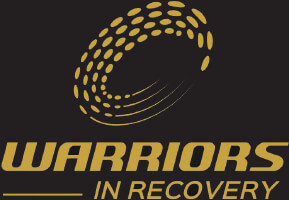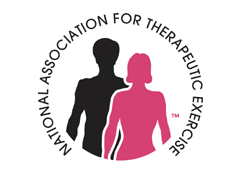
Many injuries occur in our bodies because of muscle imbalances, weakness or instability in other areas of the body. For instance, if your glutes lack strength, then your knee is more susceptible to collapsing inward, which in turn then puts stress on your ACL. If you lack ankle stability, then this lack of strength can cause instability and migrates up the chain as pain in your knee.
In short, there are two types of knee injuries can occur. Contact and non-contact injuries. Contact injuries for the most part can’t be avoided. There’s nothing you can do if someone happens to roll into the side of your leg during a game. However, many knee injuries occur from simply landing from a jump, decelerating or changing direction. These types of injuries CAN be prevented.
I wrote a previous Blog Entry on our body’s healing cycles (if you haven’t read it, its worth scrolling back on my blog to read). It helps you understand why some injuries can take up to 9 months to recover from because they need time to heal. The reason this is so complex is that you need to restore mobility, stability, function, rebuild muscle tissue and restore coordination. Sometimes the process can be long and hard. Even worse, returning to play can take even longer mentally because you might not have confidence in that joint that you did before the injury.
Its not all bad though. There are a lot of great injury prevention exercises you can do that don’t require a gym and can be done easily at home. The following four great exercises are frequently used in rehab, but they can also be used post-rehab to continue improving your strength, stability and mobility. The key to these is to do each exercise slowly, so that you really isolate the muscles and really make them work. Speed capitalizes on the tendency of a weight in motion to stay in motion.
As anyone in involved physical activity or sport knows, you can’t expect your body to operate in tip-top shape without a little preparation. There are a lot of wonderful stretches and exercises to help you pre-hab before catastrophe happens. My advice? Pick a few from each common injury group (back, hip, knee, foot, etc.) to help stay out of the doctor’s office and “get a leg up on” staying healthy, strong, fit…and injury free!
Cheers, Drock
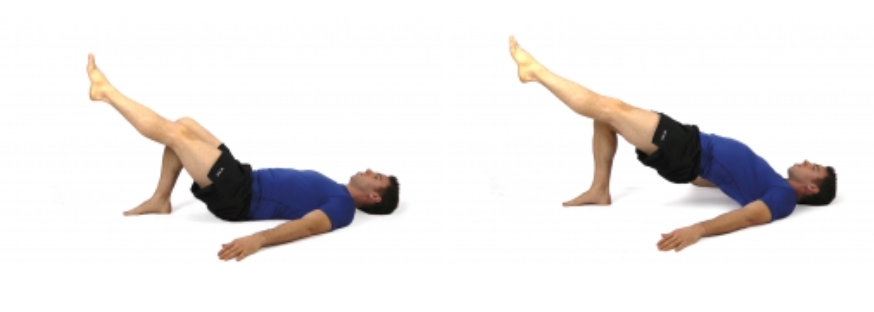
Glute Bridges
- Start lying on your back with knees bent.
- Lift on leg off the floor and go up into a shoulder bridge peeling one vertebrae at a time.
- keeping the leg out straight and thigh in line with other the thigh, lower yourself on the ground and lift yourself back up, peeling one vertebrae at a time.Sets: 3 Repetition: 10 Frequency: 2 x / day
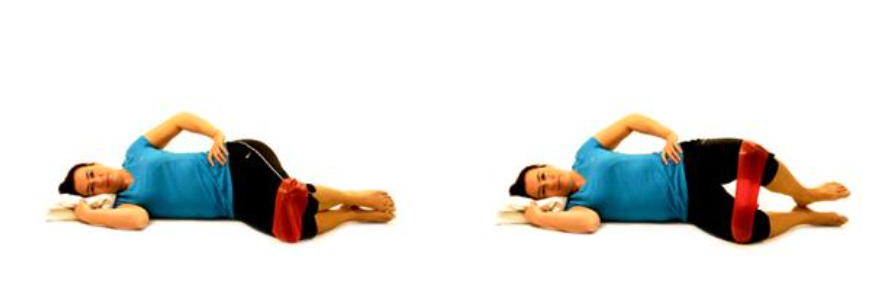
Clamshells (can be done with or without band)
- Lie on your side with your knees bent.
- Tie elastic around your knees.
- Lift your upper knee without moving your pelvis.
- Lower your knee and repeat.Sets: 3 Repetition: 10 Frequency: 2 x / day
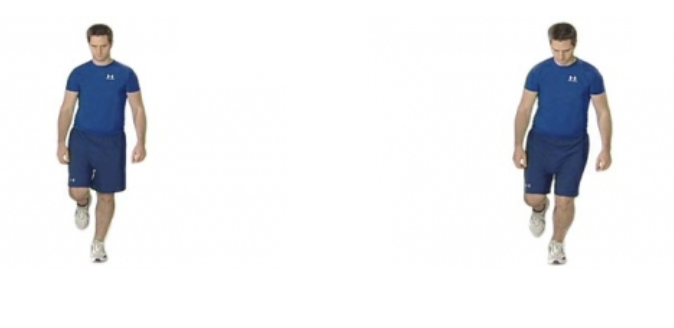
One Leg Squats (can add a resistance band to this one)
- Stand on one leg
- Lower your body by bending the knee.
- Gently squeeze / activate the muscles in your buttock to keep the knee cap aligned with the 2nd toe.
- Only bend to a 1/3 range.
- Return to starting position and repeat.
- NOTE: Keep your knee stable (avoid any lateral movements) during the exercise.Sets: 3 Repetition: 10 Frequency: 2 x / day
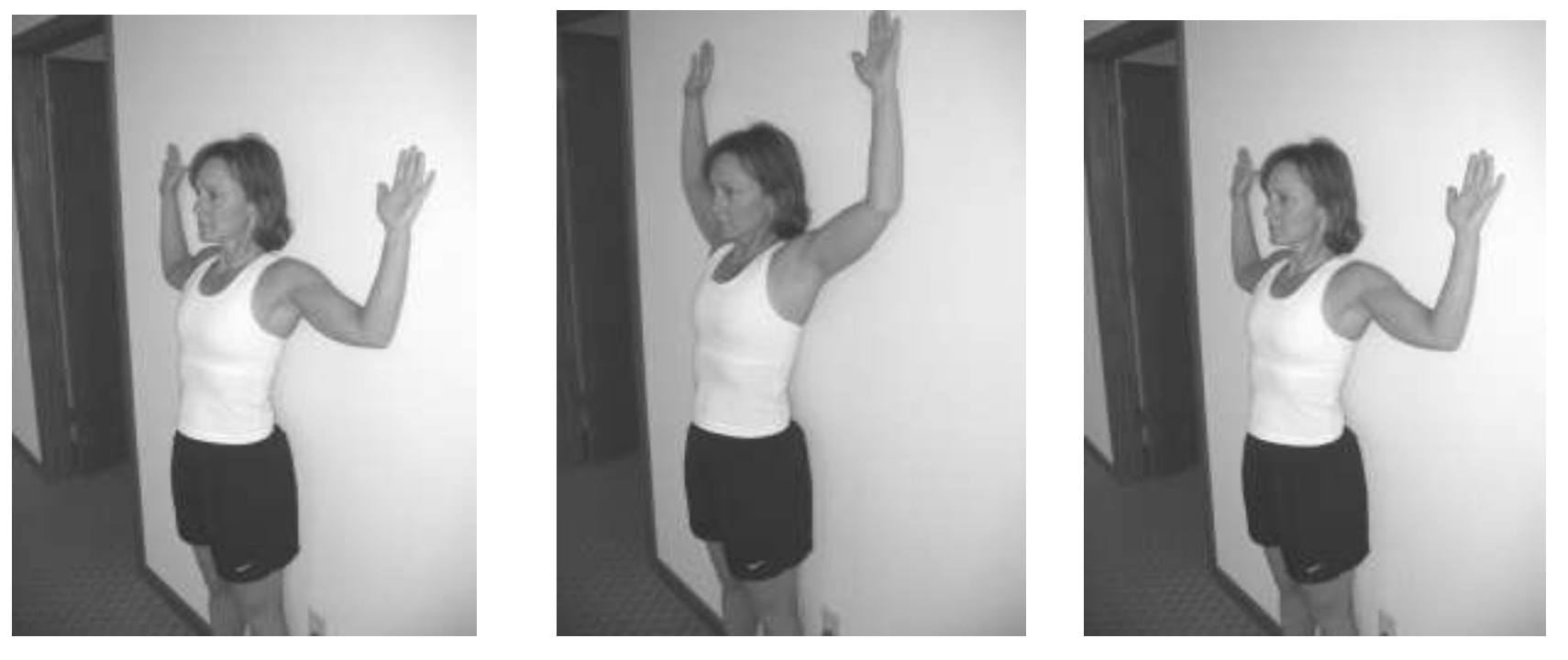
Don’t Shoots (This one only looks easy!)
- Stand with your back flat up against a smooth surface like a wall or door.
- Place your hands and elbows flat against the wall start with arms perpendicular to the floor. (make sure that there is NO SPACE between you and your body and wall)
- Gently and slowly slide your elbows and hands up and then down the wall.
DO NOT LET THE ELBOWS OR HANDS LEAVE THE WALL SURFACE. Remember to do comfortably without removing arms and elbows from the wall.
Sets: 3 Repetition: 10 Frequency: 3 x / day
(Burning in the upper back muscles is common at first.)
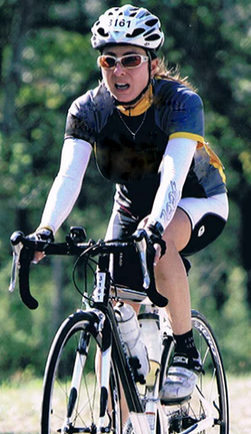
Want to learn more about improving your functional movement and sports performance? Then follow Dianne’s blog: https://dtasmblog.wordpress.com
Dianne Rockefeller is a Licensed Massage Therapist, National Academy of Sports Medicine – Certified Personal Trainer, Certified Orthopedic Manual Therapist, Certified Myoskeletal Therapist, Certified Kinesio Taping Practitioner, Certified Cupping Therapist, and Muscle Activation Techniques Practioner (MAT). She has treated athletes of all levels, from youth to professional, from all sports. She brings a very unique perspective to manual therapy utilizing her experience with motion analysis and sport. Her blend of advanced integrated skills along with practical and rehabilitation experience deliver exceptional results. Dianne is a self-proclaimed scholar of “Applied Performance Manual Therapies”. Contact Dianne at drock@dtasm.com or 210-973-4848.

